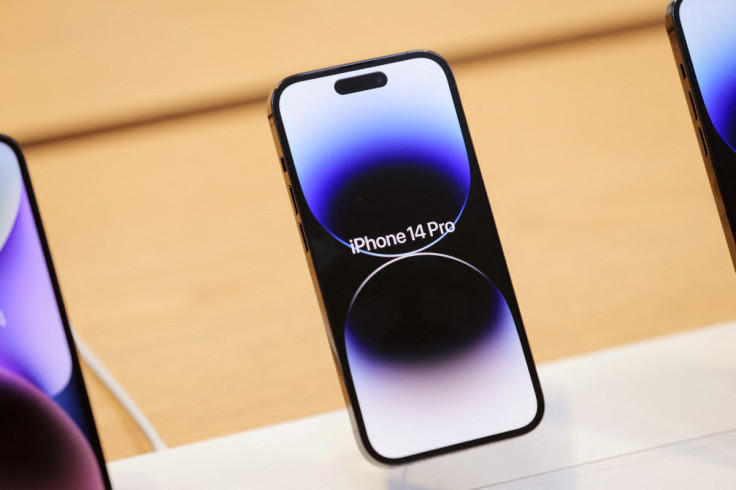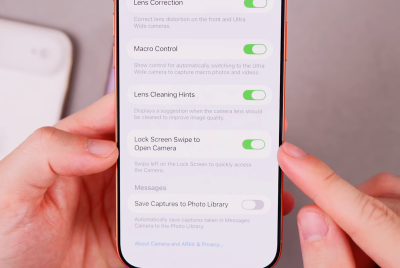Here's why the CHIPS Act could end up making the iPhone, consoles more expensive
Analysts say there's a catch in shifting manufacturing to the U.S. as it could raise the manufacturing costs of chipmaking.

Enacted by the 117th United States Congress and signed into law by President Joe Biden on August 9, 2022, the CHIPS and Science Act is a U.S. federal statute meant to provide new funding to boost research and semiconductors manufacturing. However, critics argue that it might not be helping American consumers as it could make iPhones and Android smartphones even more expensive.
The U.S. government has been touting the benefits of the new Chips and Science Act, which include boosting the country's research, production, and semiconductor development.
"It will strengthen American manufacturing, supply chains, and national security, and invest in research and development, science and technology, and the workforce of the future to keep the United States the leader in the industries of tomorrow, including nanotechnology, clean energy, quantum computing, and artificial intelligence. The CHIPS and Science Act makes the smart investments so that Americans can compete in and win the future," the Biden Administration said via its official fact sheet.
However, analysts say there's a catch in shifting manufacturing to the U.S. as it could raise the manufacturing costs of chipmaking. This could raise the prices of products that use chips, such as iPhones, Android smartphones, and game consoles. Just how high prices will rise ultimately depend on how much companies such as Apple, Alphabet, Samsung, and other phone makers tweak their designs, supply chains, and processes to manage costs, according to CFRA Research analyst Angelo Zino.
Considering that chips are a big component in the overall manufacturing cost of a smartphone, it's easy to understand how a hike in chip prices could also significantly increase the phone's cost.
Around 54 per cent of the $527 estimated manufacturing cost of an iPhone 14 Plus represents the cost of the semiconductors in the device, according to Narinder Lall, who directs so-called "teardown analyses" of technology devices for Ottawa-based semiconductor information TechInsights, CNBC reported. Meanwhile, the phone's core A15 processor, designed by Apple and manufactured by TSMC, is estimated to be around $81.
TechInsights say that semiconductors comprise the biggest component cost of an iPhone. Other notable components are the display screen, which costs about $64, and the cameras, which cost around $98. It must be noted that both components contain chips made by Sony.
Meanwhile, the Tensor chip of the Google Pixel 7, one of iPhone's competitors, costs around $101. The phone's camera is estimated to cost around $88.
The core apps processor and 5G modem combined for its South Korean competitor add up to $198. This is a sizable chunk of the $618 manufacturing cost of an S-22 Plus phone.
Telecom execs are increasingly worried about the potential rise in cost. For instance, Social Mobile CEO Robert Morcos estimates that the cost of chip-making could rise by as much as 40 per cent. Using an iPhone as a reference, this 40 per cent increase could translate to over $100 in the phone's manufacturing cost.
There are several reasons why bringing chip manufacturing to the U.S. is more expensive. For instance, Taiwan Semiconductor Manufacturing Company Chief Financial Officer Wendell Huang explained that building chip factories is far more expensive in the U.S. than in Taiwan.
"The major reason for the cost gap is the construction costs of building and facilities, which can be four to five times greater for a U.S. fab versus a fab in Taiwan," Huang explained. "The high costs of construction includes labor costs, costs of permits, cost of occupational safety and health regulations, inflationary costs in recent years, and people and learning curve costs."
Fortunately, American consumers won't likely fully shoulder the increased iPhone manufacturing costs. "We don't expect Apple will fully transfer the possible chipset cost increase to the consumer side," TechInsights senior director of smartphone strategies Linda Sui said, adding that Apple's nearly 40% hardware profit margins give it room to absorb chip price increases. "Given the strong user loyalty and stickiness of iPhone users...we expect the impact on the consumer side would be minimal."
© Copyright IBTimes 2025. All rights reserved.





















